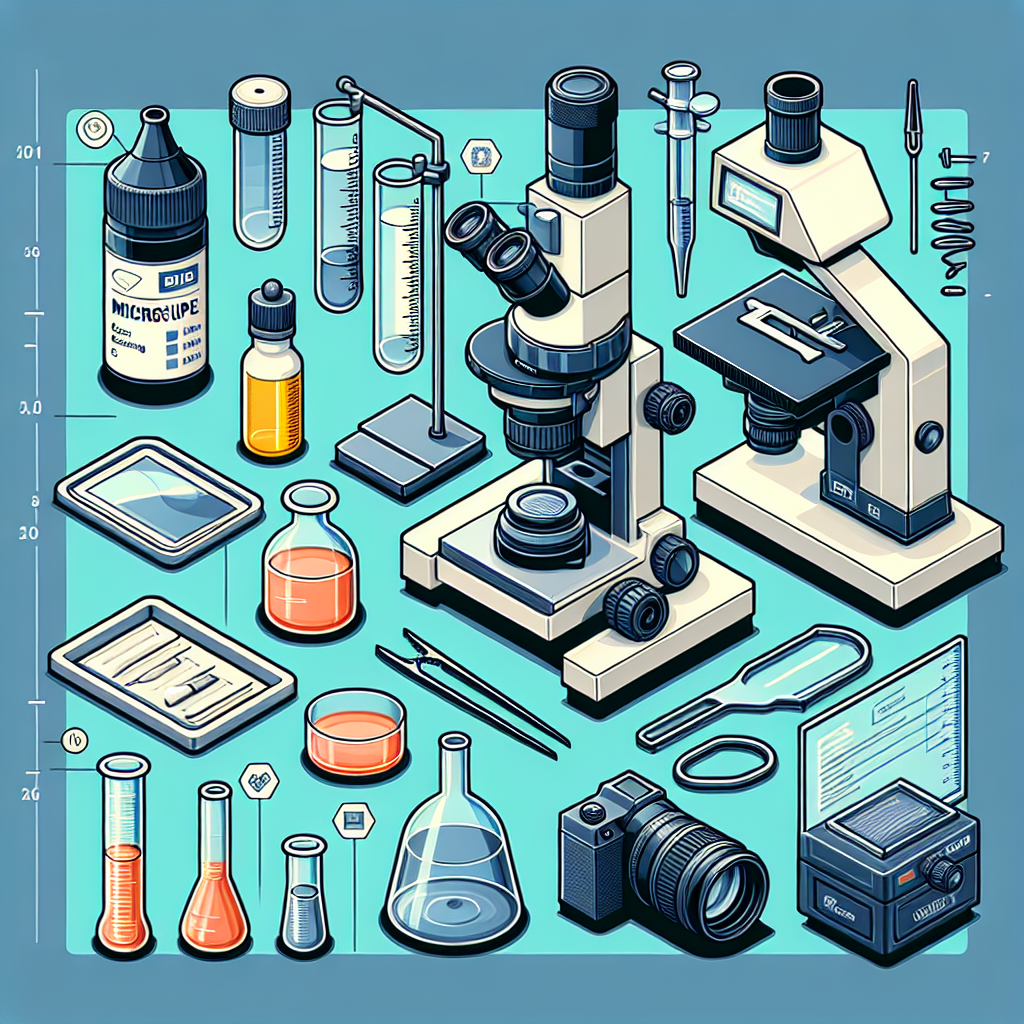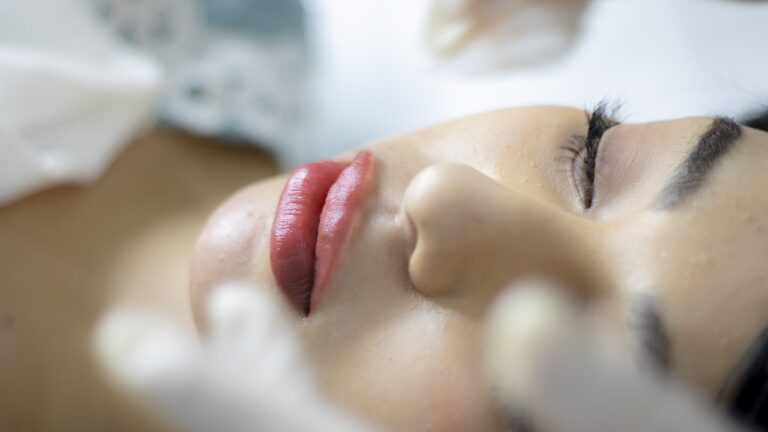As an Amazon Services LLC Associates Program participant, we earn advertising fees by linking to Amazon, at no extra cost to you.
Top Microscope Accessories Every Scientist Needs
Microscopes are incredible tools, but they need the right accessories to shine. Imagine enhancing your research with high-quality objectives and reliable lighting systems! These accessories are game changers, making detailed observations easier and more accurate. From cleaning supplies that keep your optics crystal clear to calibration tools that ensure precision, every accessory plays a vital role in your microscopy experience. Let’s dive into the must-haves that can elevate your scientific work!
Key Features of Different Eyepieces and Objectives
Here’s a quick rundown of must-have microscope accessories that can elevate your research experience!
- High-quality objectives are a must. They determine magnification and resolution, impacting detail visibility.
- Achromatic objectives correct color errors. This leads to better image fidelity, especially for colorful specimens.
- Plan Apochromats offer superior performance. They reduce optical aberrations, providing a flatter field of view.
- Eyepieces come in various designs. Wide-field eyepieces enhance comfort and viewing experience during long sessions.
- Polarizing filters can enhance contrast. They’re perfect for birefringent specimens, revealing structures often missed.

Understanding Calibration Tools for Accurate Measurements
Calibration tools are the unsung heroes of microscopy. They ensure that every measurement is spot on. Using stage micrometers is a game changer. They provide a precise scale reference, allowing you to check your microscope’s accuracy.
Most people think calibration is a hassle. I disagree because it’s actually a straightforward process that guarantees reliable results. Imagine conducting an experiment without knowing if your measurements are accurate!
Regular calibration checks save you from potential errors. They keep your objective lenses and measuring equipment in top shape. This is especially critical for dynamic environments.
Emerging digital tools are changing the calibration game. Software that automates calibration tasks can boost efficiency. According to iST Scientific, “A well-equipped laboratory is the backbone of quality research,” and calibration tools are part of that equipment.
Don’t overlook the importance of calibration. It’s not just about accuracy; it’s about confidence in your data. Every scientist should prioritize these tools.
Oct 6, 2024 … Electron Microscopy in Materials Science: FEMMS Impressions Some first impressions on the FEMMS conference. Absolutely amazing progress in …
Sergei Kalinin on LinkedIn: Electron Microscopy in Materials …
What are the best sources of funding for early-career researchers? … Turning Science into Things People Need. Wise Media Group May 28, 2010. Can a …
Apr 12, 2024 … As part of the NanoMi project, we built our own transmission electron microscope from scratch and designed all of our own electronics, software …
Under the microscope: Microscopy is the glue that binds science …
Innovative Lighting Systems for Enhanced Observations
Most people think traditional lighting is sufficient for microscopy. I believe innovative lighting systems can transform observations. LED lighting is a prime example; it offers bright, consistent illumination without overheating.
Fluorescent lighting? It’s a game changer for biological specimens. It highlights details that standard lighting often misses. This is key for researchers aiming for precision.
Adjustable light intensity is another fantastic feature. It allows us to tailor the lighting conditions based on specimen type. According to UCDavis, this can dramatically improve imaging quality.
But let’s not stop there! Exploring advanced techniques like dark-field or phase contrast can further enhance visibility. These methods are often overlooked but can yield incredible results.
Incorporating these lighting innovations not only improves clarity but also reduces eye strain during long sessions. Embracing these technologies can elevate our microscopy game to new heights!
Top Accessories for Improved Microscope Functionality
Here’s a rundown of must-have microscope accessories that can elevate your research experience!
- High-quality objectives are a must. They determine magnification and resolution, impacting detail visibility.
- Achromatic objectives correct color errors. This leads to better image fidelity, especially for colorful specimens.
- Plan Apochromats offer superior performance. They reduce optical aberrations, providing a flatter field of view.
- Eyepieces come in various designs. Wide-field eyepieces enhance comfort and viewing experience during long sessions.
- Polarizing filters can enhance contrast. They’re perfect for birefringent specimens, revealing structures often missed.
- LED lights offer consistent brightness. They generate less heat, protecting your specimens.
- Fluorescent lighting enhances contrast. It reveals details that standard lighting might miss, essential for biological studies.
- Adjustable light intensity is a game changer. It allows for tailored lighting conditions based on specimen type.
- Cleaning supplies are essential. Lens paper and alcohol keep optics clear for optimal performance.
- Calibration tools are vital. Stage micrometers ensure your measurements are accurate and reliable.
Medical laboratory scientists perform complex tests on patient samples using sophisticated equipment like microscopes. The data they find plays an important …
Medical Laboratory Scientist – Explore Health Care Careers – Mayo …
Every scientist needs a laboratory to do the work and find their solutions. Ours resides in multiple facilities in Southeast's multi-million science quad.
Experiment with leaving out or changing steps. We've told you that you need each step, but is this true? Find out for yourself. Try leaving out a step or …
The Bachelor of Science in Biology is offered by a top-ranked program … This emphasis includes all of the coursework required for admission to medical school.
… required. There are four parts to every degree: university requirements; college requirements; major/coordinate major requirements; electives (which vary in …
Majors and Minors | Lyman Briggs College | Michigan State University
Importance of Proper Cleaning and Maintenance Supplies
Cleaning your microscope isn’t just a chore; it’s a game changer. A clean microscope ensures optimal performance and longevity. Regular maintenance supplies like lens cleaning solutions and wipes are essential.
Most people think any cloth will do, but I believe using specialized wipes is far better. They prevent scratches and keep optics crystal clear.
Dust accumulation is a sneaky enemy. A soft brush can do wonders to keep your view unobstructed.
Don’t forget about the mechanical parts! A little grease goes a long way in keeping everything running smoothly. Trust me, a well-maintained microscope can last years longer.
Have you ever tried ultrasonic cleaning? It’s revolutionary! This method uses sound waves to eliminate dirt without damaging delicate components.
According to iST Scientific, “A well-equipped laboratory is the backbone of quality research.” So, don’t skimp on cleaning supplies!
Think about it: investing in proper maintenance tools is investing in your research. Your microscope deserves the best care!
Advantages of LED vs. Fluorescent Lighting Systems
Here’s a quick look at the benefits of LED and fluorescent lighting systems in microscopy. Each has unique features that can significantly impact your observations.
- LED lights offer consistent brightness. They generate less heat, protecting your specimens.
- Fluorescent lighting enhances contrast. It reveals details that standard lighting might miss, essential for biological studies.
- Adjustable light intensity is a game changer. It allows for tailored lighting conditions based on specimen type.
- LEDs are energy-efficient. They last longer, saving you money in the long run.
- Fluorescent systems can be specialized. They can be tuned for specific applications, providing versatility.
Comparison of Optical Components: Achromatic vs. Plan Apochromats
Here’s a comparison of optical components that can enhance your microscopy experience:
| Feature | Achromatic Objectives | Plan Apochromats |
|---|---|---|
| Optical Correction | Corrects for chromatic aberration | Corrects chromatic and spherical aberrations |
| Field Flatness | Good, but not perfect | Exceptional flatness across the field |
| Image Clarity | Clear images with some distortion | Superior clarity with minimal distortion |
| Cost | More affordable | Higher price point |
| Best Use Case | General microscopy | High-end research applications |
Top Accessories for Improved Microscope Functionality
Here’s a curated list of must-have accessories that every scientist should consider to boost their microscopy experience.
- High-quality objectives are a must. They directly affect magnification and resolution, allowing for stunning detail.
- Eyepieces matter too! Wide-field eyepieces enhance comfort during long observation sessions.
- LED lighting is a game changer. It provides consistent brightness without overheating, protecting your specimens.
- Calibration tools are essential. Stage micrometers ensure your measurements are accurate, which is crucial for reliable results.
- Cleaning supplies can’t be overlooked. Specialized lens wipes prevent scratches and keep optics crystal clear.
- Don’t ignore polarizing filters. They enhance contrast in birefringent specimens, revealing structures often missed.
- Sample slides and coverslips are vital. They securely mount specimens for optimal viewing.
- Consider investing in ultrasonic cleaning. It uses sound waves to clean delicate optics without damage.
Medical laboratory scientists perform complex tests on patient samples using sophisticated equipment like microscopes. The data they find plays an important …
Medical Laboratory Scientist – Explore Health Care Careers – Mayo …
Browse the latest lab supplies and equipment for all your science lab essentials. Shop Carolina's variety of lab equipment including microscopes, glassware, …
… accessory kit comes with everything a young scientist needs. … Shop our Best Selling Premium Microscope Bundles and get a QUALITY microscope and accessories, …
Experiment with leaving out or changing steps. We've told you that you need each step, but is this true? Find out for yourself. Try leaving out a step or …
Here are what I would consider the basics that every science teacher should have to start out. I have not included technology/robotics or the various supplies …
Basic Supplies You Need in Your Science Classroom – Science By …
Advanced Optical Components to Elevate Microscopy
Many people think that standard objectives are enough for microscopy. I believe that investing in advanced optical components can truly transform your observations. Choosing the right objectives can enhance clarity and detail.
For instance, achromatic objectives are great, but plan apochromats take it a step further. They correct for more optical errors, giving you a flatter field of view. This can make all the difference when analyzing minute details.
Polarizing filters are another game changer. They improve contrast in birefringent specimens, revealing structures that would otherwise go unnoticed. It’s that simple: better components lead to better results!
Many experts suggest sticking to basic setups, but I think that’s limiting. Exploring supplementary optical devices can expand your microscope’s capabilities. Why not push the boundaries of what you can see?
According to iST Scientific, “A well-equipped laboratory is the backbone of quality research.” Investing in advanced optical components is an essential part of that equation. Check out their insights for more.
Understanding these options not only improves your research but also enriches your overall experience with microscopy. Don’t settle for basic; elevate your microscopy game!
Essential Microscope Accessories Every Scientist Should Have
Every scientist should have a solid set of microscope accessories. These tools can dramatically enhance your research experience. For starters, high-quality objectives and eyepieces are non-negotiable. They directly influence magnification and resolution, allowing for detailed specimen observation.
Illumination systems are another must-have. I prefer LED lights because they provide bright, consistent lighting without generating excess heat. This not only protects the specimens but also reduces eye strain during long hours of observation.
Don’t overlook sample slides and coverslips. They’re essential for mounting specimens securely. And let’s not forget about stage micrometers and calibration slides—they’re crucial for precise measurements. These tools ensure that your findings are accurate and reliable.
Cleaning supplies are equally important. Keeping your microscope lenses clear is vital for optimal performance. I always have lens paper and alcohol on hand for quick clean-ups.
Lastly, let’s talk about innovative cleaning techniques. Ultrasonic cleaning machines are gaining traction. They use sound waves to remove dirt without damaging delicate optics. This method saves time and enhances the longevity of your equipment.
For more insights, check out iST Scientific’s guide on essential lab supplies.
What are the must-have accessories for a microscope?
Every scientist needs top-notch microscope accessories. High-quality objectives and eyepieces are non-negotiable. They directly impact magnification and resolution, allowing for stunning detail in your specimens.
Illumination systems are crucial too. I swear by LED lights; they provide bright, consistent lighting without overheating. This not only protects your specimens but also reduces eye strain.
Don’t forget cleaning supplies! Keeping lenses clear is vital for optimal performance. I always have lens paper and specialized wipes on hand.
Calibration tools like stage micrometers are essential for accuracy. They ensure that your measurements are spot on. Trust me, precise data is key to quality research.
For more insights, check out iST Scientific’s guide on essential lab supplies.
How often should I clean my microscope?
Most people think cleaning a microscope is just a routine chore. I believe it’s a fundamental part of maintaining its performance. Regular cleaning can dramatically improve your observations.
Depending on usage, I recommend cleaning after every session. If you’re working with messy samples, you might need to clean even more frequently. It’s that simple: a clean microscope means clearer views!
Don’t skimp on cleaning supplies. Specialized lens wipes are a must to avoid scratches. According to iST Scientific, “A well-equipped laboratory is the backbone of quality research.”
Embrace ultrasonic cleaning for a thorough cleanse. This method uses sound waves to safely remove dirt without risking damage. Your microscope deserves the best care!
What are the benefits of LED lighting over traditional bulbs?
Most people think traditional bulbs are just fine for microscopy. I disagree because LED lighting offers consistent brightness without overheating. This protects delicate specimens and reduces eye strain during long sessions.
LEDs are energy-efficient, lasting longer than incandescent options. This means less frequent replacements, saving you money over time.
According to UCDavis, adjustable light intensity allows for tailored conditions based on specimen type. It’s that simple: better lighting leads to better observations!
How do I properly calibrate my microscope?
Calibration tools are essential for accurate microscopy. I always use stage micrometers for precise measurements. They provide a reliable scale reference, ensuring accuracy.
Most people think calibration is tedious. I find it straightforward and necessary for quality results. Regular checks keep your microscope in top shape.
Emerging digital tools can automate calibration tasks. This boosts efficiency and reliability in data collection. According to iST Scientific, “A well-equipped laboratory is the backbone of quality research.”
Can I use household cleaning supplies for my microscope?
Most people think household cleaners are fine for microscope maintenance. I believe that’s a big mistake. Regular cleaning supplies often contain chemicals that can damage delicate optics.
Using specialized lens cleaning solutions is the way to go. They’re designed specifically for optical surfaces, ensuring clarity and preventing scratches. You wouldn’t want to risk your expensive equipment for a quick fix!
Cleaning wipes made for microscopes are a must-have. They keep your lenses crystal clear without leaving residue. Trust me, investing in the right supplies pays off in the long run.
As noted by iST Scientific, “A well-equipped laboratory is the backbone of quality research.” So, why compromise?
Every scientist knows that top-notch accessories are a must. High-quality objectives and eyepieces transform your observations. They directly impact magnification and resolution, making details pop.
Illumination systems? Absolutely essential! I swear by LED lights because they provide consistent brightness without overheating. This not only protects specimens but also reduces eye strain.
Calibration tools are another must-have. Stage micrometers ensure your measurements are accurate. They’re crucial for reliable results in any experiment.
For more insights, check out iST Scientific’s guide on essential lab supplies.
Most people think cleaning a microscope is just a chore. I believe it’s a game changer because regular maintenance keeps your equipment running smoothly.
Cleaning supplies like specialized wipes are essential. They prevent scratches and keep optics crystal clear.
According to iST Scientific, “A well-equipped laboratory is the backbone of quality research.” So, don’t skimp on maintenance!
Most people think traditional lighting suffices for microscopy. I believe innovative lighting systems can transform your observations. LED lighting stands out; it offers consistent brightness without overheating.
Fluorescent lighting reveals details missed by standard bulbs. This is key for biological specimens. Adjustable light intensity lets us tailor conditions for different samples.
Emerging techniques like dark-field and phase contrast can elevate visibility. These methods often get overlooked, but they yield incredible results. According to UCDavis, better lighting leads to better observations!
Most people think that standard objectives are sufficient for microscopy. I believe that investing in advanced optical components can truly transform your observations. Choosing the right objectives can enhance clarity and detail.
For instance, achromatic objectives are great, but plan apochromats take it a step further. They correct for more optical errors, giving you a flatter field of view. This can make all the difference when analyzing minute details.
Polarizing filters are another game changer. They improve contrast in birefringent specimens, revealing structures that would otherwise go unnoticed. It’s that simple: better components lead to better results!
Investing in these optical upgrades isn’t just a luxury; it’s a necessity for high-quality research. According to iST Scientific, “A well-equipped laboratory is the backbone of quality research.” Don’t settle for basic; elevate your microscopy game!
Calibration tools are absolutely vital for any serious microscopy work. Using stage micrometers is essential. They provide an accurate scale reference, ensuring your measurements are spot on.
Many people think calibration is a hassle. I find it straightforward and necessary for quality results. Regular checks keep your microscope in top shape.
Emerging digital tools can automate these calibration tasks. This boosts efficiency and reliability in data collection. According to iST Scientific, “A well-equipped laboratory is the backbone of quality research.”
As an Amazon Services LLC Associates Program participant, we earn advertising fees by linking to Amazon, at no extra cost to you.











